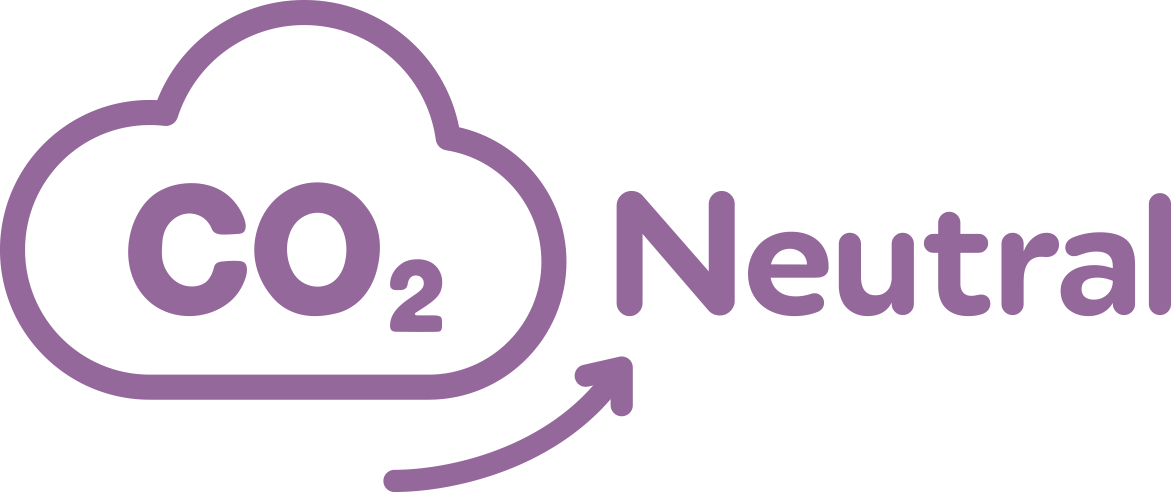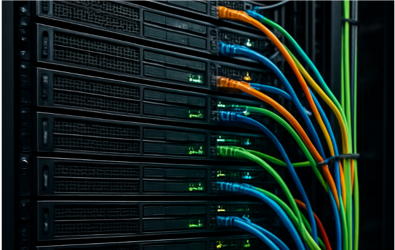Understanding website energy use
How websites use energy from Host to end user.
Introduction
Every time you click on a website link, you trigger a complex chain of events that span continents, involve billions of dollars’ worth of infrastructure, and consume real physical energy. The process feels instantaneous, but beneath the surface, your request for information pulls from a worldwide web of servers, data centers, fiber optic cables, and end-user devices. Each of these steps consumes energy, contributing to the carbon footprint of our digital world.
In today’s increasingly online society, understanding how websites use energy is crucial—not only for engineers and policy makers, but for anyone who cares about sustainability. Websites may appear immaterial, but the internet accounts for an estimated 2–4% of global greenhouse gas emissions, rivaling the aviation industry. To grasp this impact, we need to unpack where energy is used, from the host that serves a website to the device where you read it.
1. Hosting: The Starting Point of Energy Consumption
At the core of every website lies a server: a specialized computer that stores website files, databases, and application code. When you visit a website, your browser sends a request to this server, which processes the request and delivers the content back to you.
Servers and Energy Use
Servers run 24/7 to ensure availability, consuming energy both when actively handling traffic and when idle. Each server typically consumes between 500 watts and 2 kilowatts depending on its configuration and workload. Unlike personal computers, servers are optimized for performance and reliability, which means they cannot easily power down to save energy without risking downtime.
Data Centers
Most websites are not hosted on a single machine but on racks of servers within data centers. These facilities consume vast amounts of electricity, not only to power servers but also to keep them cool. For every watt consumed by a server, an additional 0.3 to 1 watt is often needed for cooling and facility overhead, depending on the data center’s efficiency.
Virtualization and Cloud Hosting
To improve efficiency, many websites use virtual servers provided by cloud platforms like AWS, Google Cloud, or Microsoft Azure. Virtualization allows multiple websites to share the same physical server, spreading energy use more effectively. Cloud providers also invest heavily in renewable energy and advanced cooling methods, but the physical reality remains: every website request consumes energy at the hosting level.
2. Transmission: The Energy Cost of Data Travel
Once the hosting server processes a request, the website data must travel across the internet to reach the user. This happens through a vast web of routers, switches, undersea cables, and wireless towers. Each step in this transmission consumes energy.
Networking Equipment
Routers and switches act as the traffic directors of the internet, forwarding data packets toward their destination. These devices are always on, consuming between a few watts for home routers to thousands of watts for large backbone routers in internet exchange points. While the energy per packet is small, the sheer scale of traffic—hundreds of exabytes per month globally—makes network energy consumption significant.
Long-Distance Transmission
For websites hosted overseas, data must travel across undersea fiber-optic cables powered by repeaters that boost the signal every 50–100 kilometers. These repeaters are strategically placed along transoceanic cables and draw electricity to maintain signal integrity.
Last-Mile Connectivity
When data reaches a user’s city, it passes through local ISPs, cellular towers, and Wi-Fi routers before finally arriving at the user’s device. This “last mile” is often one of the most energy-intensive parts of the internet, particularly in mobile networks where base stations consume large amounts of power.
3. The User’s Device: A Key Energy Hotspot
Once the website arrives at its destination, the end-user’s device takes over. Whether it’s a smartphone, tablet, laptop, or desktop, displaying a website requires electricity.
Device Energy Use
- Smartphones consume between 2–6 watts when browsing.
- Laptops consume between 20–60 watts depending on screen brightness and activity.
- Desktops can draw anywhere from 100–400 watts, especially when paired with high-resolution displays.
The device’s screen is often the biggest single energy draw, especially for high-resolution OLED and LCD displays. Rendering complex websites—especially those with heavy JavaScript, animations, or video—requires additional CPU and GPU cycles, further increasing energy use.
Caching and Repeated Visits
When users revisit websites, cached data reduces the amount of information that needs to be transmitted, thereby lowering both device and network energy use. Efficient web design that leverages caching can dramatically improve sustainability.
4. Energy in Different Types of Websites
Not all websites consume energy equally. The complexity and media type of a site play a huge role.
- Text-Based Websites (e.g., Wikipedia) are relatively lightweight, requiring minimal energy per page load.
- Media-Rich Websites (e.g., news sites with autoplay videos and ads) consume significantly more energy because of large file sizes and numerous third-party scripts.
- Streaming Platforms (e.g., YouTube, Netflix) are among the most energy-intensive, as video streaming accounts for over 60% of global internet traffic. Streaming a single hour of HD video can use as much electricity across the chain as running a laptop for days.
- E-Commerce Sites often use heavy analytics, personalized recommendations, and tracking scripts, adding to the computational and network overhead.
5. Measuring Website Energy Use
How much energy does a single website visit consume? Studies estimate that loading a typical web page can use between 0.2 to 5 grams of CO₂ equivalent, depending on complexity and infrastructure. That may sound small, but multiply it by billions of visits per day and the numbers become staggering.
A popular website like Google or Facebook handles billions of requests daily, consuming megawatts of power continuously. Even smaller websites with a few thousand visitors per day can contribute meaningfully to internet energy demand.
6. Efficiency Strategies: Reducing the Energy Footprint
The good news is that web energy use is not fixed—there are strategies at every stage of the process to reduce consumption.
At the Hosting Level
- Use efficient cloud providers powered by renewable energy.
- Employ content delivery networks (CDNs) to cache data closer to users, reducing transmission distance.
- Optimize server utilization through virtualization and load balancing.
In Transmission
- Upgrade to more efficient networking equipment.
- Transition to fiber-optic connections, which are more energy-efficient than copper or wireless systems.
- Encourage ISPs to use renewable energy to power local infrastructure.
On the User Side
- Optimize websites for efficiency: compress images, reduce unnecessary JavaScript, and use lightweight design.
- Implement dark mode options to reduce screen power consumption on OLED displays.
- Promote caching and offline functionality to cut repeat data transfers.
Systemic Solutions
- Shift more data centers toward renewable energy.
- Set regulatory standards for energy efficiency in networking and hosting.
- Educate developers and businesses about digital sustainability practices.
7. The Hidden Costs of “Free” Websites
It’s important to note that many websites rely on advertising and tracking scripts, which significantly increase energy usage. Each ad request triggers additional server calls, while tracking pixels and analytics tools add further overhead. A study by the Shift Project found that removing unnecessary scripts could cut a website’s energy use by up to 40%.
So while a minimalistic, ad-free website may load in under a second and use minimal electricity, a cluttered commercial website may require dozens of background requests, multiplying its footprint.
8. Future Trends in Web Energy Use
The demand for online content continues to grow, raising questions about sustainability. Several trends are shaping the future:
- Edge Computing: Processing data closer to users reduces transmission distances and improves efficiency.
- AI Integration: Websites and apps increasingly use AI for personalization, search, and content generation—but AI models can be energy-hungry. Optimizing their use will be key.
- Greener Data Centers: Hyperscale providers are investing in renewable-powered campuses, liquid cooling, and AI-driven workload optimization.
- User Awareness: Just as consumers consider the carbon footprint of food or travel, digital sustainability may soon become a mainstream concern, encouraging demand for “low-carbon websites.”
Conclusion
Websites may seem intangible, but they are powered by a global energy ecosystem stretching from the server rack to the smartphone screen. Every stage—hosting, transmission, and end-user consumption—draws on real electricity, contributing to the internet’s environmental impact.
The good news is that solutions exist. By designing efficient websites, using renewable-powered hosting, and optimizing data transmission, we can make the internet more sustainable. Awareness is the first step: recognizing that each click, scroll, and video stream is not free, but part of a global chain of energy consumption.
As the digital world continues to expand, balancing technological growth with ecological responsibility will be one of the defining challenges of our age. The energy behind websites may be invisible, but its impact is anything but.
Write about something you know. If you don’t know much about a specific topic, invite an expert to write about it. Having a variety of authors in your blog is a great way to keep visitors engaged.





